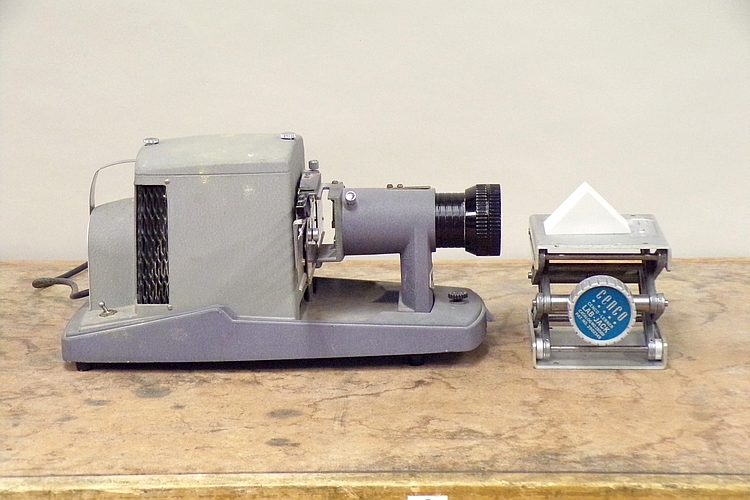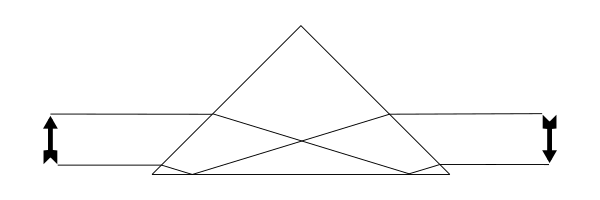
Inserted in the projector is a slide with an image of Broida Hall, which appears right side up on a screen. On the jack is a right-angle prism, sitting on its long face. When you move the prism into the beam of the projector, the image on the screen is inverted. (The piece of plastic ruler under the edge of the prism allows alignment of the inverted image with the original image.)
When light passes from air into glass at a non-zero angle of incidence, it is refracted toward the normal to the surface of the glass. In the apparatus shown above, then, rays from the projector are bent downward as they enter the prism. Since they meet the bottom face of the prism at an angle that is greater than the critical angle, they suffer total internal reflection and exit through the opposite face of the prism. (See Demonstration 80.18 -- Refraction tank.) The diagram below shows the paths that rays coming from the top and bottom of an object take as they pass through the prism to form an image.
We see that the image of the object is inverted. Since the rays are refracted only in the vertical direction, the image is unchanged along the horizontal axis. That is, it is inverted, but not reversed from left to right. We also see that rays entering the prism from above a certain height do not reach the bottom face of the prism, but instead reach the opposite face, where they are refracted further downward as they exit. Assuming an index of refraction of 1.5 for the glass (which was the value used in the construction of the figure above), this height is about 0.47 times the height (altitude to the bottom face) of the prism. The photograph below, which shows a white arrow on a red background viewed through the prism oriented as shown above (the arrow is pointing upward), illustrates this.
In the lower portion of the prism, we see the inverted arrow on its red background. In the upper portion of the prism, we see light reflected from the surface of the aluminum jack on which the prism is sitting.
The behavior of this prism oriented in this way is identical to that of a dove prism (see demonstration 80.25 -- Dove prism).

